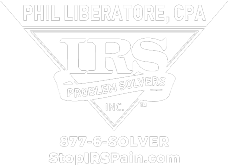Tax highlights for 2016 returns and 2017 planning

While last year was quiet in terms of tax legislation, you’ll want to be aware of some changes that will have an impact on your 2016 personal and business tax returns and your 2017 planning. Here’s a brief summary.
IRA rollovers. In general, funds you withdraw from your IRA must be redeposited within 60 days of receipt. In some cases, when you inadvertently miss the 60-day deadline, you can get relief by “self-certifying” that the delay meets one of eleven specific reasons. If any of the eleven apply, you have up to 30 days after the reason or reasons no longer prevent you from making the contribution to complete the rollover.
Bonus depreciation. Bonus depreciation is an additional first-year deduction of up to 50% of the cost of qualified property that you purchase and place in service during the year. The 50% rate is effective for 2016 and 2017. You can claim bonus depreciation in addition to Section 179 accelerated depreciation.
Home mortgage interest. You may be able to claim a larger mortgage interest deduction if you co-own a home with someone other than your spouse. In specific situations, both owners may be able to claim a deduction.
Section 179. The maximum Section 179 immediate expensing limit for qualifying property you bought and placed in service in 2016 is $500,000 ($510,000 for 2017). The deduction is phased out above a $2,010,000 threshold for 2016 ($2,030,000 for 2017). Section 179 expensing is also available for certain lighting, heating, and cooling equipment placed in service in commercial buildings.
Estates. Under basis consistency rules, you’ll need to calculate your basis in inherited property consistently with the amount reported on the federal estate tax return. Generally, you’ll receive a form from the estate. Be aware these rules affect your duties as an executor, as well as your reporting requirements as a beneficiary.
Partnerships. New partnership audit rules take effect in 2017. Changes include allowing the IRS to assess audit adjustments to the partnership. Certain partnerships, generally those with fewer than 100 partners, can opt out of the new rules.
Home sale gain exclusion. Generally, you can exclude up to $250,000 of gain from the sale of a home when you’re single ($500,000 when you’re married), as long as you meet the requirements. You may also qualify for a partial exclusion, if the primary reason for the sale is unforeseen circumstances. “Unforeseen” means events you could not have reasonably anticipated before buying the home and moving in. For example, a partial exclusion was allowed when a family living in a two-bedroom, two-bath condominium gave birth to another child and needed a larger residence.
© MC 2017


